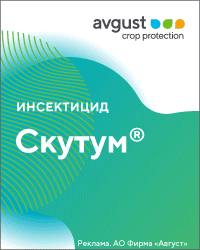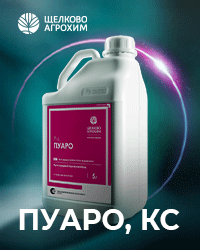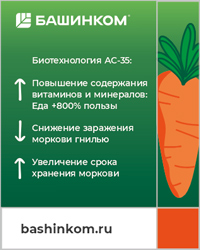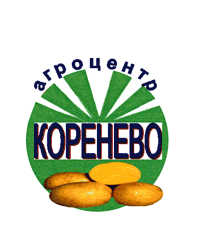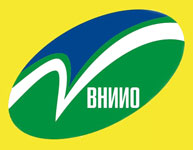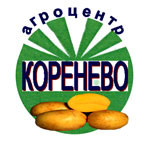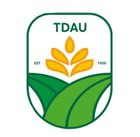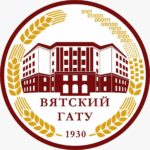UDC 633.81:547.91:665.524.2
https://doi.org/10.25630/PAV.2025.77.75.002
Dmitriev K.O., Nugmanov A.H.-H., Osmolovskiy P.D., Bakin I.A., Mustafina A.S.
This article presents the results of a comparative analysis of essential oil from the fruits of fragrant dill (Anethum graveolens L.), obtained by hydrodistillation and studied using a gas chromatograph with mass spectrometric detection, which showed the presence of a number of volatile organic compounds. 8 compounds were found from 2 studied samples of fragrant dill fruits, one of which is a commercial sample of the Pryanaya Ryadka trademark (Reutov) («sample 1»), and the second, grown on experimental fields of the Department of Vegetable Growing of the Moscow State Agricultural Academy named after K.A. Timiryazev («sample 2»), among which monoterpenes and their derivatives make up the bulk. The essential oil of fragrant dill fruit was characterized by a high content of d-carvone and d-limonene (70.61%, 65.98% and 21.99%, 26.35%, respectively), which determined its aromatic profile and biological activity. The remaining components are present in insignificant amounts, but they contribute to the formation of a complex aromatic profile and expand the range of potential applications of essential oil. When comparing the results of hydrodistillation between the studied samples of fragrant dill fruits, there was a difference in the composition of the main components in the essential oil and the release time of 1 ml of essential oil over a certain time interval. Fragrant dill fruits grown on the basis of the Department of Vegetable Growing of the Russian State Agricultural Academy named after K.A. Timiryazev demonstrated a faster extraction time of 1 ml of oil (1.13 times faster) with the same experimental setup, respectively, despite the similar chemical composition and identical regime during hydrodistillation, the difference in extraction time may be affected by agrotechnical factors, the technological process, and the storage conditions of fruits, for this reason, it is necessary to take into account a complex of production factors when organization of industrial production of essential oil from dill fruits, this will optimize the technological process and ensure stable quality of the final product. The prospects for further research are related to an in-depth study of the influence of agrotechnological features on the component composition and physico-chemical characteristics of essential oil from dill fruits, as well as the development of standardized production methods.
Key words: essential oil crops, fragrant dill fruits, essential oil, component composition, hydrodistillation
Dmitriev K.O., postgraduate student of the Department of processes and apparatuses of processing industries. E-mail: kirill_dmitriiev_00@mail.ru
Nugmanov A. H.-H. (author for correspondence), D.Sci.(Techn.) professor, professor of the Department of technology of storage and processing of fruit and vegetable and crop products. E-mail: albert909@yandex.ru
Osmolovskiy P.D., Cand. Sci. (Agr.), associate professor of the Department of technology of storage and processing of fruit and vegetable and crop products. E-mail: pavel.osmolovsku@mail.ru
Bakin I.A., D.Sci.(Techn.), professor, Head of the Department of processes and apparatuses of processing industries. E-mail: bakin@rgau-msha.ru
Mustafina A.S., Cand.Sci.(Techn.), associate professor, Associate Professor of the Department of Technology of Storage and Processing of Fruit and Vegetable and Crop Products. E-mail: mustafina@rgau-msha.ru Russian State Agrarian University – Moscow Timiryazev Agricultural Academy
- Biologically active substances of spicy-aromatic and medicinal plants from the collection of the Nikitsky Botanical Garden. A.E. Paliy, O.A. Grebennikova, V.D. Trubyagov, I.N. Paliy. Collection of scientific papers of the Nikitsky State Botanical Garden. 2014. Vol. 139. Pp. 107–115 (In Russ.).
- A review of medicinal and aromatic plants and their secondary metabolites status under abiotic stress. A. Zehra, S. Choudhary, M. Naeem., M.V. Akhan, T. Aftab. J Med Plants Stud. 2019. Vol. 7(3). Pp. 99–106.
- The antioxidant activity of spices and their effect on human health (review).Ya.I. Yashin, A.N. Vedenin, A.Ya. Yashin, B.V. Nemzer. Sorption and chromatographic processes. 2017. Vol. 17. No6. Pp. 954–969 (In Russ.).
- Roldan L.P., Diaz G.J, Duringer J.M. Composition and antibacterial activity of essential oils obtained from plants of the Lamiaceae family against pathogenic and beneficial bacteria. Rev Colomb Cienc Pecu. 2010. Vol. 23. Pp. 451 – 461.
- Petrenko A.V. A new variety of odorous dill (Anethum graveolens L.) and a universal decoction. Bulletin of the Belarusian State Agricultural Academy. 2022. No1. Pp. 104–107 (In Russ.).
- The State Pharmacopoeia of the Russian Federation. Volume IV. XIV ed. Moscow. FEMB, 2018. 1833 p.
- Alan O., Ilbi H. Effect of Cutting Treatment on Seed Yield and Seed Quality of Dill // Journal of Tekirdag Agricultural Faculty. 2023. Vol. 20(1). Pp. 94 –103.
- Kaur V., Kaur R., Bhardaj U. A review on dill essential oil and its chief compounds as natural biocide. Flavour Fragr. J. 2020. Vol. 36. Pp. 412–431.
- Chemical components of essential oils and biological activities of the aqueous extract of Anethum graveolens L. grown under inorganic and organic conditions. S. Ozliman, G. Yaldiz, M. Camlica, N. Ozsoy. Chem. Biol. Technol. Agric. 2021. Vol. 8. P. 20.
- The antioxidation of different fractions of dill (Anethum graveolens) and their influences on cytokines in macrophages RAW264.7 / Z. Li, Y. Xue, M. Li, Q. Guo, Y. Sang, C. Wang, C. Luo // J. Oleo Sci. 2018. Vol. 67. Pp. 1535–1541.
- Youssef R.S.A. Medicinal and non-medicinal uses of some plants found in the middle region of Saudi Arabia. J. Med. Plants Res. 2013. Vol. 7. Pp. 2501–2513.
- A new technology for the extraction of essential oil from the fruits of fragrant dill. N.N. Boyko, D.I. Pisarev, E.T. Zhilyakova, A.Y. Malyutina, O.O. Novikov. Fine chemical technologies. 2019. Vol. 14. No2. Pp. 33–40 (In Russ.).
- Tremasova M., Borisova T. Definition of pesticides: Shimadzu solutions. Analytics. 2016. No2(27). Pp. 38–53 (In Russ.).
- Çelik, S.A. Chemical Compositions of Essential Oil and Crude Oil of Some Fruits belonging to Umbelliferae Family cultivated in Konya Ecological 151 Conditions / S.A. Çelik, İ. Ayran // Kahramanmaraş Sütçü İmam Üniversitesi Tarım ve Doğa Dergisi. 2020. No23(4). Рp. 1030–1038.
- Analysis of the dynamics of essential oil accumulation in dill plants to clarify the optimal stage of raw material processing. N.V. Nevkrytaya, E.D. Ametova, M.P. Marchenko, I.L. Danilova. Biological features of medicinal and aromatic plants and their role in medicine: proceedings of the International Scientific and Practical Conference on the 85th anniversary of VILAR. Moscow. 2016. Pp. 508–512 (In Russ.).
- Kushnarev A.G., Gnitetskaya A.O. The influence of sowing dates on the essential oil content in dill fruits in the dry-steppe zone of Buryatia. Bulletin of the Buryat State Agricultural Academy named after V.R. Filippov. 2023. No3(72). Pp. 27–36 (In Russ.).
- Pochuev P.V., Malankina E.L., Kozlovskaya L.N. Prospects of non-root treatment with glycine solution to increase the productivity of garden dill. Vegetables of Russia. 2021. No5. Pp. 64–68 (In Russ.).
- Shelepova O.V., Khusnetdinova T.I. The effect of the use of growth regulators on the component composition of the essential oil of the aboveground mass and fruits of fragrant dill. Chemistry of vegetable raw materials. 2018. No1. Pp. 217–220 (In Russ.).
- Aminosäuren für Arzneipflanzen aus Familie Doldenblütler (Apiaceae) / E. Malankina, P. Potschuev, G. Malankin, B. Zaitchik, A. Ruzhitskiy. Zeitschrift für Arznei- und Gewürzpflanzen. 2022. Vol. 26(1). Pp. 4–9.
PDF(Rus)
For citing: Comparative assessment of the yield and chemical composition of essential oil from fragrant dill fruits. K.O. Dmitriev, A.H.-H. Nugmanov, P.D. Osmolovskiy, I.A. Bakin, A.S. Mustafina. Potato and vegetables. 2025. No4. Pp. 38-43. https://doi.org/10.25630/PAV.2025.77.75.002 (In Russ.).

